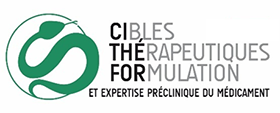Un article intitulé "Challenging development of storable particles for oral delivery of a physiological nitric oxide donor" vient d'être publié dans "Nitric Oxide".
Auteurs : Yi Zhou, Caroline Gaucher, Isabelle Fries, Mehmet-Akif Hobekkaya , Charlène Martin, Clément Leonard, Frantz Deschamps, Anne Sapin-Minet, Marianne Parent.
Nitric Oxide 2020 Aug 6;S1089-8603(20)30173-7. doi: 10.1016/j.niox.2020.08.001.
Abstract
Nitric oxide (NO) deficiency is often associated with several acute and chronic diseases. NO donors and especially S-nitrosothiols such as S-nitrosoglutathione (GSNO) have been identified as promising therapeutic agents. Although their permeability through the intestinal barrier have recently be proved, suitable drug delivery systems have to be designed for their oral administration. This is especially challenging due to the physico-chemical features of these drugs: high hydrophilicity and high lability. In this paper, three types of particles were prepared with an Eudragit polymer: nanoparticles and microparticles obtained with a water-in-oil-in-water emulsion/evaporation process versus microparticles obtained with a solid-in-oil-in-water emulsion/evaporation process. They had a similar encapsulation efficiency (around 30%), and could be freeze-dried then be stored at least one month without modification of their critical attributes (size and GSNO content). However, microparticles had a slightly slower in vitro release of GSNO than nanoparticles, and were able to boost by a factor of two the drug intestinal permeability (Caco-2 model). Altogether, this study brings new data about GSNO intestinal permeability and three ready-to-use formulations suitable for further preclinical studies with oral administration.

